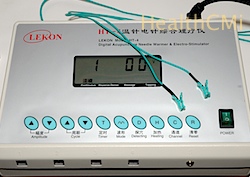New studies demonstrate that acupuncture is effective for the treatment of headaches, migraines, arthritis, neck pain, back pain and shoulder pain. In a meta-analysis of 20 sham-controlled studies and 18 non-sham controlled studies, acupuncture was found both safe and effective for these disorders. The investigation compared the type of control groups with the impact on patient outcomes. Sham control analysis included non-needle sham, penetrating needle sham and non-penetrating needle sham. Non-sham analysis included protocolized care and custom, non-specified care. The researchers concluded that, “Acupuncture is significantly superior to control irrespective of the subtype of control.”

A main focus of the study was to determine appropriate control interventions for acupuncture research. The researchers discovered that penetrating needle sham controls exert quantifiable physiologic activity. As a result, the research team recommends that this type of control be strictly avoided in most research methodologies. However, they add that penetrating acupuncture needle sham controls “may well have a place when addressing questions of point specificity in explanatory trials.” The findings reveal that “penetrating needles have important physiologic activity, even when inserted superficially away from true acupuncture points. Accordingly, we recommend that this type of sham be avoided.”
The researchers note, “Acupuncture is significantly superior to sham irrespective of the type of sham control, both in the main analysis and in a sensitivity analysis excluding outlying studies.” In addition, the research team found “no significant differences between non-penetrating needles and sham techniques that did not involve needling.”
The research team notes “Acupuncture was significantly superior to sham irrespective of the type of sham control and superior to non-sham control irrespective of whether that constituted routine or protocolled care.” The most common non-penetrating needle employed in most studies was the Streitberger needle. A detailed investigation revealed that participants could not distinguish between the Streitberger placebo needle and true acupuncture. The researchers note that the effectiveness of acupuncture has been validated against empirically credible placebo controls.
The results of this study inform researchers on proper research controls. A revelation from the meta-analysis is that acupuncture has been repeatedly proven effective against stringent placebo controls in high quality trials. The researchers underscore the importance of choosing proper controls and note that there has been a “large increase” in published research within the last several years. Critics of acupuncture now find themselves pitted against an enormous body of research demonstrating its clinical effectiveness in providing statistically significant positive patient outcomes. Scientific skepticism now points to the incredulity of acupuncture critics towards multiple, high quality, placebo controlled, large sample trials conducted at major universities by respected researchers.
Recent related research published in The Journal of the American Medical Association (JAMA) finds acupuncture groups had significantly greater reductions of pain than both non-treatment control groups and sham control acupuncture groups. In multiple high quality studies, acupuncture was found effective for reducing pain associated with osteoarthritis, chronic headaches, shoulder pain, nonspecific musculoskeletal pain, neck pain and back pain. The researchers from Memorial Sloan-Kettering Cancer Center, New York and Technical University, Munich note that the scope was “restricted to high-quality trials” from the USA, UK, Germany, Spain and Sweden.
Concern was expressed by the researchers that the sham acupuncture control groups received true acupuncture because some of the placebo techniques “involved skin penetration.” They note that the sham acupuncture may not be “physiologically inactive.” The researchers note “trials that include sham acupuncture as a comparison may underestimate the effects of acupuncture on pain reduction.”  Electrostimulator
Electrostimulator
The researchers note that many established guidelines support the use of acupuncture. The American College of Physicians guidelines recommend acupuncture for the treatment of back pain. The UK National Institute for Health and Care Excellence (NICE) guidelines recommend acupuncture treatments for both chronic headaches and migraines when unresponsive to pharmaceutical medications.
In related research, researchers from the Rutgers University Medical School, New Jersey have proven that acupuncture prevents inflammation. The surgery department researchers proved that electroacupuncture fights infections including polymicrobial peritonitis and reduces severe systemic inflammation due to infections, sepsis. Sham points did not exert anti-inflammatory responses. Only true acupuncture was effective in regulating both dopamine and cytokine levels and produced anti-inflammatory effects. The researchers documented that electroacupuncture reduced lipopolysaccharide-induced serum levels of cytokines, reduced inflammation and prevented death due to sepsis.
References:
MacPherson, Hugh, Emily Vertosick, George Lewith, Klaus Linde, Karen J. Sherman, Claudia M. Witt, Andrew J. Vickers, and Acupuncture Trialists' Collaboration. "Influence of Control Group on Effect Size in Trials of Acupuncture for Chronic Pain: A Secondary Analysis of an Individual Patient Data Meta-Analysis." PLOS ONE 9, no. 4 (2014): e93739.
Vickers AJ, Linde K. Acupuncture for Chronic Pain. JAMA. 2014;311(9):955-956. doi:10.1001/jama.2013.285478.
Rafael Torres-Rosas, Ghassan Yehia, Geber Peña, Priya Mishra, Maria del Rocio Thompson-Bonilla, Mario Adán Moreno-Eutimio, Lourdes Andrea Arriaga-Pizano, Armando Isibasi, Luis Ulloa. Dopamine mediates vagal modulation of the immune system by electroacupuncture. Nature Medicine, 2014; DOI: 10.1038/nm.3479.


